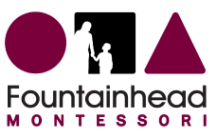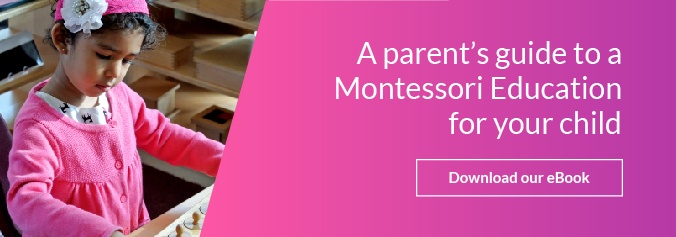In the world of early childhood education, few approaches have stood the test of time like the Montessori method. Developed by Dr. Maria Montessori over a century ago, this educational philosophy continues to thrive because it aligns remarkably well with what modern science tells us about how children develop and learn. At Fountainhead Montessori School, we've witnessed firsthand how this science-backed approach helps children flourish intellectually, emotionally, and socially.
The Brain Science Behind Montessori
Recent advances in neuroscience have validated what Dr. Montessori observed through her work with children: the early years are a critical period of brain development. During the first six years of life, children experience what scientists call "sensitive periods" – windows of opportunity when the brain is especially receptive to developing specific skills and abilities.
The Montessori approach capitalizes on these sensitive periods by providing carefully designed materials and activities that correspond to children's developmental readiness. This is not simply theoretical – brain imaging studies have shown that children in Montessori programs demonstrate enhanced development in executive functions, the set of cognitive processes that include working memory, flexible thinking, and self-control.
Self-Directed Learning and Intrinsic Motivation
One of the hallmarks of Montessori education is its emphasis on self-directed learning. Rather than imposing a rigid curriculum, Montessori classrooms allow children to choose activities that interest them within a carefully prepared environment.
Research in developmental psychology supports this approach. Studies have consistently shown that when children have autonomy in their learning, they develop stronger intrinsic motivation – the desire to learn for the joy of learning rather than for external rewards. A landmark study published in the journal Science found that Montessori students showed greater intrinsic motivation and reported feeling more of a sense of "flow" during learning activities compared to their peers in traditional schools.
The Mixed-Age Classroom Effect
The traditional Montessori classroom spans a three-year age range, creating a mini-society where younger children learn from older ones, and older children reinforce their knowledge by teaching concepts to younger peers. This practice aligns with Lev Vygotsky's theory of the "zone of proximal development," which suggests that children learn best when engaging with concepts just beyond their current mastery level with the support of more advanced peers.
Research has shown that this mixed-age approach promotes prosocial behaviors like empathy and cooperation while reducing competitive stress. It also provides natural opportunities for leadership development and differentiated learning experiences.
Concrete to Abstract: The Montessori Materials
Perhaps the most distinctive aspect of Montessori education is its specialized learning materials, designed to move children from concrete, hands-on experiences to abstract understanding. This progression mirrors what cognitive scientists have discovered about how the brain builds knowledge – first through sensory experiences, then gradually forming mental representations and abstract concepts.
For example, when a child works with the Montessori bead materials, they gain a tactile understanding of numerical quantities before moving to symbols and operations. Neuroscientific research confirms that this multisensory approach strengthens neural pathways and creates deeper, more durable learning than abstract instruction alone.
The Whole Child Approach
Montessori education doesn't separate cognitive development from social, emotional, and physical growth. This holistic view aligns with current understandings in developmental psychology that recognize these areas are deeply interconnected.
Studies published in the Journal of Research in Childhood Education have found that Montessori students often demonstrate advanced social cognition, emotional regulation, and problem-solving skills compared to peers in conventional educational settings. These advantages extend beyond academic achievement to encompass the development of the whole child.
Practical Applications at Fountainhead Montessori
At Fountainhead Montessori School, we see the science of the Montessori method in action every day:
- Our carefully prepared environments respond to sensitive periods in development
- Our teachers act as guides, supporting children's natural curiosity and intrinsic motivation
- Our mixed-age classrooms foster peer learning and social development
- Our authentic Montessori materials provide the concrete-to-abstract progression that builds strong neural connections
- Our focus on independence and practical life skills supports executive function development
Parents often report that they chose Montessori education based on intuition – it simply "felt right" for their child. What they may not realize is that this intuition is backed by a wealth of scientific evidence. The Montessori method works not by chance but because it was designed through careful observation to work in harmony with children's natural development.
By choosing Fountainhead Montessori School, you're not just selecting an educational philosophy; you're providing your child with an environment scientifically designed to nurture their development during the most formative years of their life. Reach out today to schedule a tour of campus.












Let us know what you think about this post
Put your Comment Below: